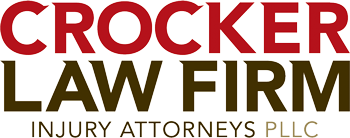
Ordering medical records is central to building an injury claim
If you’ve been hurt in an accident, ordering medical records is central to building a claim. Once we obtain these records, my job is to gain a better sense of what our clients have endured through records review. That means combing through medical records for symptoms, treatments, and diagnoses, as well as any comments that might better tell a client’s story.
You don’t need to be involved in an accident to be interested in what may be included in your medical records, however. You may be curious about an exact diagnosis you were given, or how your blood pressure has (hopefully) improved over your past few checkups.
Although this information is considered private, you are entitled to a copy of your medical records, and in Kentucky, you can get the first copy of your medical records for no charge.
How can I get a copy of my records?
If you are a patient, you can usually call your provider’s office and request this information directly. For larger facilities, you may be directed to a records department, which specializes in handling these kinds of requests. Remember, your medical information is private, so you may have to provide information to confirm your identity.
Let the office know the date range for which you are requesting records, and how you would like to receive your records (mail, fax, or email—Dropbox may also be an option). Keep in mind that not all facilities have the same capabilities when it comes to sending records. Smaller offices may only send records via mail, for example. For larger hospitals or clinics with many physicians, you may also need to specify which provider’s records you are seeking.
Bear in mind that some records, such as records for surgeries and hospital stays, can be hundreds of pages long. The same goes for records with numerous visits over long date ranges. In the case of inpatient hospital stays, sometimes you can request a condensed record. In some instances, however, a physical record may be burdensome to send or receive via mail.
What is all of this?
If you’re not used to looking at medical records, it’s going to appear overwhelming at first. Not all records are formatted the same way, and not all of them will even arrive in chronological order. Thankfully, we don’t receive many hand-written notes these days (we all know the stereotype about doctors’ handwriting!).
For any appointment or visit, you can expect to find the provider(s) who treated you, the purpose of the appointment, what treatment was provided (x-rays, CT scans, injections, therapies), any medications given or prescribed, and any recommendations given by your provider. You can also usually find a recap of your medical history, surgical history, family history, and current medications. Ordinarily if your provider gives you an off work note or work restrictions, a copy will be either scanned in your record or mentioned in the notes.
What does all of this mean?
Once you’re familiar with the flow of the notes, there are some terms and abbreviations that can be confusing as well. These are common in the records I review here, but this is by no means an exhaustive list:
C/O: Complains of. See “Complaint”
Complaint: Although this sounds jarring, this is simply your main concern, or the reason for your visit.
Dx: Diagnosis, or assessment. Your provider’s description of your problem.
FU: Follow up.
Fx: Fracture.
H/O: History of. See “HPI”
HA: Headache.
HPI: History of Present Illness. An explanation of what’s currently going on.
Hx: History or Family History.
Impression: Often seen on imaging results, this is a “preliminary diagnosis” that still needs the opinion of another provider.
ROS: Review of Symptoms.
Rx: Prescription.
Sx: Symptoms.
Tx: Treatment.
Vitals: Also called vital signs. Blood pressure, heart rate (or pulse), respirations (number of times you breathe in and out in a minute), and body temperature. Height and weight, among other measurements, may also be included in this category in your records.
Requesting and reviewing records is just one of the ways we help relieve clients’ stress after an accident. If you find yourself injured in a wreck, contact Crocker Law Firm to see if we can help.


